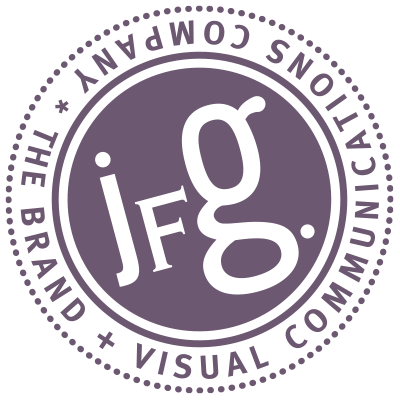How to Ensure a Successful Creative Project
Do you know what is required to ensure a successful creative project? Of course, setting expectations is crucial, but providing constructive feedback is also an essential element. Effective feedback helps your creative project develop, improve, and succeed to support the brand, so it speaks to your audience. Creative projects are, by their very nature, collaborative. The most successful collaborations are built on mutual respect, open communication, and complete agreement with the end goal. Each party must be committed to the process and willing to challenge one another while providing honest and constructive feedback. When I work with a client, our work together is a true partnership. Each of us brings to the table expertise, knowledge, and experience that is an essential component to a successful engagement.
When it comes to your company, you are the expert and know the goals you have for your business. You know your audience, including what they struggle with and hope to achieve. You also know your products and services and how your company can best help your clients. Finally, you know how you want your competition, prospective clients, and team to feel about your company.
When it comes to visual communications, however, I am the expert. I provide solutions to problems. My work is purposeful. I am on your team and want your project to not only accomplish its goal but be a smashing success — which is also why I won’t shy away from telling you if you’re making the wrong call. I keep your strategy, audience, and goals in mind at all times. When I present a solution, it is unique to your project’s objective. The only way I can do that effectively is if we work together.
Six Tips to a Successful Creative Project
The most successful creative projects follow a similar pattern and adhere to a number of expectations around the project’s stakeholders, schedule, and objectives. It also requires us to give and receive constructive feedback, feedback that is specific and actionable. Here are the several tips I talk to my clients about to ensure the success of their creative project:
Involve all stakeholders from the beginning. It’s crucial to know who will be involved throughout the project process. I need to know who is responsible for providing input, giving feedback, and serving as the final decision-maker. Because design is a process, I like to involve at least two stakeholders throughout and avoid any last-minute additions to the team. While everyone has different personal preferences, any decision made by large committees will require compromise and therefore lack a singular vision. Because vision is not a group activity, having many decision-makers interferes with the possibility of the process going smoothly.
Respect the schedule. Agreeing on a timeline is an essential part of any project process. At the beginning of an engagement, we’ll work together to create a detailed schedule that includes deadlines for presentations, reviews, and feedback. Meeting these deadlines is critical if you wish to complete the project on time. If there is a need for additional time for input or another round of creative development, the project deadline will need to be adjusted. Every extra day added to the schedule will require at least three additional days added to the project deadline. Rushing leads to unfortunate mistakes, especially if it’s due to waffling over decisions or delaying the start of the project. If anything puts our deadlines in jeopardy, I will let you know right away, and I appreciate it if you return the favor.
Document your feedback. Feedback is most effective when we can talk through it at a conversational pace. If you send a list of critical bullet points with minimal context, you’re unlikely to make your point effectively. Instead, take the time to talk through your notes — either face-to-face or on the phone. When the conversation is over, always follow up with a list of your specific feedback notes. With any project, it is essential to document all feedback. I use a combination of two tools, Adobe PDFs and Asana. I find it helpful to annotate a PDF of the design, capturing your notes and ideas within the project document. I then use Asana for project management. Asana is an efficient way to collect and document your feedback. Asana keeps everything in one place, so none of the details are lost. It also notifies you of tasks and due dates, tracks which revision we are on, and shows us where we are in our project timeline. This combination of tools saves time, reduces miscommunications, and keeps us accountable to one another. Documenting feedback is especially important when several stakeholders are involved in the project.
Be direct, honest, and specific. For our partnership to succeed, I need to know what works well and what doesn’t. We must both be as specific as possible. General feedback won’t help a creative project push toward a final product. However, you can take broad criticism and turn it into better feedback by giving specific examples. Let me know if you’re envisioning brighter colors, bolder fonts, or larger graphics. Understanding why you like or dislike a design element gives me more context. It lets me determine whether I need to modify the design, propose a different solution, or advocate for the one I already presented. Specific notes can propel creative projects forward, while general criticism can turn a feedback session into a waste of time.
Identify the problem, not the solution. My goal is to show you solutions that work, so please point out anything that isn’t working as soon as you see it. Try to avoid giving prescriptive feedback. For example, instead of asking me to move a button and make it bigger or bright red, explain why you want to make a change. Are you afraid that people won’t see it because it doesn’t stand out from the rest of the copy on the page? Or do you think the font is too small to read? Also, pulling together design examples that embody what you are looking for can be helpful in the beginning stages. But designing a mockup with direct instruction to follow precisely short-changes what is supposed to be a creative and collaborative process. Once I understand all of your concerns, we can discuss possible solutions and resolve the problem together.
When in doubt, refer back to the strategy and the brand guidelines. With every project, there should be a strategy in place to guide the process. If your company has brand guidelines, you can refer to them to determine whether a particular direction is aligned with the overall strategy. The strategy is there to guide us to the goal. If there is any doubt refer to these items to make sure we stay on track. Because what we like is so subjective, it’s helpful to keep the strategic goals in mind and think about the design from your ideal client’s perspective.
It All Comes Down to Communication
When you work with me, you’re bringing on a strategic partner who will take the time to understand your brand and your audience, and who will help you achieve your business goals. My goal is to show you visual communications solutions that work. We achieve the best results when we exchange ideas openly and honestly.
If you’re looking for a creative partner to help establish your brand and grow your business, schedule a 30-minute consultation.
BRAND ESSENTIALS FOR THE ENTREPRENEUR
Read more about branding, strategy, and visual communications.
JFG VISUAL COMMUNICATIONS
Are you ready to elevate your business to the next level?
Regardless if you’re in the starting phase of your business or in the position to take your start-up to the next level, you don’t have to do it alone. Learn more by scheduling a complimentary 30-minute consultation and let's get started today!




